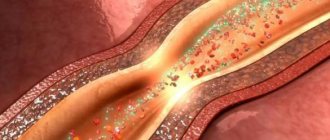Today, mental disorders are not as rare as people who are far from psychology, psychiatry and psychotherapy sometimes believe. Experts from the World Health Organization have determined that every 4th or every 5th person in the world has certain behavioral or mental disorders. However, it cannot be said that 20 to 25 percent of the world's population are mentally ill. Because “mental disorder” is a much broader concept than “mental illness.”
A mental disorder is the opposite of mental health, a condition in which a person usually successfully adapts to changing life circumstances and resolves current problems. Mental disorders can manifest as problems in the intellect, memory, emotions, or behavior. In addition, in such conditions, certain changes are noted in the perception of the surrounding world and oneself.
Diseases that are associated with mental disorders
For a long time, people have called diseases that are associated with mental disorders “diseases of the soul” because these diseases cause people to live contrary to adequate psychological health and personality traits. The process of developing the disease can be easy, while the patient can live absolutely calmly in society. But there are also severe forms of mental disorders in which the patient can no longer live a full life. The most serious mental illnesses are schizophrenia, epilepsy, and alcoholism of the 2nd and 3rd degrees. These diseases lead to serious psychosis and because of them a person can harm himself and the people around him.
The first description of mental disorders classified as exogenous belongs to Hippocrates. Under the name "phrenitis" he described a state of acute confusion. Aretaeus (1st century BC) distinguished febrile delirium from conditions caused by drugs, Celsus (1st century BC) described mental disorders during fever, and Galen (2nd century AD) pointed to distinguishing primary from secondary delirium, emphasizing that its treatment should be associated with the treatment of the underlying disease. Feverish delirium was described in more detail in the 17th century by T. Sydenham (1664). In the XIV century. Descriptions of mental disorders with scurvy and ergotism appeared in the 18th century. - with pellagra.
With the development of psychiatry in its modern understanding, the boundaries of symptomatic psychoses either expanded excessively or narrowed excessively. In German psychiatry in the first quarter of the 20th century, the existence of such psychoses was questioned [Witke O., 1936]. Depending on the evolution of psychiatric views, not only the boundaries, but also the content of the concept of “symptomatic psychoses” changed. Starting with M. Baillarger (1880), who defined symptomatic psychoses as mental complications in somatic diseases, they began to include the most diverse mental disorders in terms of clinical picture, forms of course and types of outcome associated (mainly in terms of time of occurrence) with
somatic diseases. Many authors (M. Baillarger, W. Griesinger, etc.), along with acute psychoses of the febrile period, also described protracted forms during a protracted course of the disease or immediately after it (“convalescent psychoses”). The name E. Kraepelin is associated with the idea of the specific symptoms of psychosis in each somatic disease. In general, by the beginning of the 20th century. the opinion has been established that the clinical picture of psychosis is strictly dependent on the exogenous harmfulness that caused it.
Starting with K. Bonhoeffer (1908), the concept of symptomatic psychoses has undergone significant changes: ideas about the specificity of psychoses in each somatic disease have been replaced by ideas about the generality of mental reactions to various exogenous hazards. K. Bonhoeffer formulated the concept of an exogenous type of reactions,
highlighting 5 types of such nonspecific reactions: stunning, delirium, amentia, twilight stupefaction (epileptiform excitation) and acute hallucinosis. K. Bonhoeffer explained the nonspecificity of mental reactions to various exogenous hazards by the limitations of brain reactions and their mediation by the internal environment of the body (pathogenic effects through the so-called intermediate links - toxic metabolic products that arise in the body in response to external hazards).
Later, K. Bonhoeffer (1917) expanded the clinical phenomenology of exogenous mental reactions, introducing into it maniaform, depressive, catatonic and paranoid syndromes, as well as states of emotional-hyperesthetic weakness (asthenic syndrome) and amnestic (Korsakovsky) syndrome. Particularly important is the statement of K. Bonhoeffer that the features of the clinical picture of exogenous psychoses are determined by the stage of the underlying disease: the prodrome corresponds to the phenomena of asthenia, at the height of fever delirium or psychomotor agitation (usually of the epileptiform type) develops, with a decrease in body temperature - amentia, in the period of convalescence - asthenic syndrome.
Despite all the theoretical importance of K. Bonhoeffer’s concept, it did not take into account the influence of etiological factors on the clinical manifestations of exogenous psychoses, and also unreasonably limited reactions of the exogenous type to a narrow range of psychopathological syndromes [Snezhnevsky A.V., 1968]. One of the main opponents of K. Bonhoeffer was E. Kraepelin, who initially reacted negatively to the concept of an exogenous type of reaction, which contradicted his nosological position. However, later in his work “Forms of manifestation of mental illnesses” (1920), where the concept of “registers” of mental disorders depending on the severity of brain damage was introduced, he essentially not only recognized, but also developed the concept of nosologically non-specific types of response.
No less famous is the controversy between K. Bonhoeffer and M. Specht (1914). M. Specht's main objections were that the distinction between exogenous and endogenous types of response is only relative. The difference between the exogenous and endogenous pictures of the disease depends, according to M. Specht, only on the intensity and rate of action of the pathogenic factor. If exogenous harmfulness of relatively low strength acts gradually, then a “mild form” of mental disorder occurs, that is, one that manifests itself as a picture of endogenous psychosis. If this harmfulness is massive and acts at a rapid pace, it leads to gross violations of the exogenous type. Although M. Specht's objections could not shake K. Bonhoeffer's concept, they contained some clinically sound arguments that were subsequently accepted by him. In particular, K. Bonhoeffer recognized that the boundaries of endogenous and exogenous are often blurred.
In the psychiatric literature of the 20-30s, a wide range of issues related to exogenous psychoses were discussed: the role of primary and secondary (due to general intoxication) brain damage in the occurrence of exogenous psychoses, the ratio of exogenous and endogenous in the picture of symptomatic psychoses, pathoplastic modification of the syndrome depending on constitutional characteristics, gender and age of the patient, acquired and genetically determined properties of the body, the dependence of the picture of psychosis on the etiology of the somatic disease and the stage of the disease, etc. A number of works have been published confirming the existence, along with acute, protracted symptomatic psychoses with depressive, manic and paranoid disorders [Ravkin P F., 1937; Snezhnevsky A.V., 1940; Kaplinsky M.Z., 1940]. The possibility of the development of such psychoses is still questioned by some psychiatrists.
Interest in psychopathology and the clinical picture of symptomatic psychoses increased after the Second World War due to observations of a number of exogenous wartime hazards (wound infections, etc.), as well as the introduction of new therapeutic agents into medical practice [Malkin P. F., 1945, and etc.]. Symptomatic psychoses began to be viewed in the light of accumulated experience.
The most important result of the study of symptomatic (exogenous) psychoses was the position that it is not the psychopathological syndromes themselves (exogenous, endogenous, endoform) that are nosologically specific, but the sequence of their occurrence. Consequently, the specificity of the manifestations of the disease should be sought not in statics, but in the natural sequence of changes in syndromes, i.e., during the course of the disease [Snezhnevsky A.V., 1940, 1960].
Thus, the concept of K. Bonhoeffer, progressive for its time, although it has retained its significance to the present day, has changed significantly.
The picture of symptomatic psychoses has also changed, which is primarily due to advances in the treatment of many somatic and infectious diseases. The clinical transformation of exogenous mental disorders has led to a reduction in the classical patterns of exogenous type of reactions and the predominance of “hypopsychotic” and endoform manifestations [Malkin P. F., 1963, 1964; Vangenheim K. A., 1966, 1967; Prilensky Yu. F., 1974; Trifonov B.A., 1978]. Recently, descriptions of mental disorders characteristic of new, previously unknown conditions have appeared, caused by both special influences and therapeutic interventions in extreme conditions of various origins [Golodets R. G., 1978], hemodialysis [Tsivilko M. A., 1974], heart surgeries [Kovalev V.V., 1974], etc.
In post-war psychiatry, within the framework of symptomatic psychoses, a field also emerged called psychoendocrinology.
(psychiatric endocrinology, endocrinological psychiatry).
Although the term “psychoendocrinology” appeared more than two decades ago, the study of the psychoendocrine relationships of mental changes in endocrinopathies dates back several decades (since the end of the 19th century). Vivid clinical descriptions of the psyche of patients with certain endocrine disorders (for example, with diseases of the thyroid gland), mood changes in connection with the menstrual cycle, cases of the onset of true psychoses during puberty, in the postpartum and involutional periods can be found in the works of S. S. Korsakov ( 1901), V.P. Osipov (1923), E. Kraepelin (1896, 1910), E. Bleuler (1920) and other classics of domestic and foreign psychiatry. Sometimes such observations served as the basis for assumptions about the endocrine nature of some psychoses.
The development of modern psychoendocrinology is inextricably linked with advances in the biochemistry of hormones and the physiology of the endocrine system. Of great importance were the works of I. P. Pavlov and his school on the central regulation of the activity of internal organs, the teachings of H. Selye on stress, the discovery of the phenomenon of neurosecretion in the hypothalamus, tropic hormones of the pituitary gland and a group of steroid hormones (most of them are synthesized). The latest achievement was the discovery of special humoral factors (hormones) of the hypothalamus - releasing factors, which play an important role in regulating the activity of the endocrine glands of the central nervous system. In recent years, the psychotropic effects of some of these factors have been discovered, for example the antidepressant effect of thyrotropin-releasing hormone. Along with some new data on the psychotropic effects of androgens and other hormonal drugs, this gives grounds to talk about the “rebirth of hormones in psychiatry.” This refers to a new increase in interest in the role of hormones in the pathogenesis of mental disorders and in the hormonal treatment of psychoses after a long period of disappointment due to attempts at the dawn of endocrinology to explain many mental illnesses by disorders of the functions of the endocrine glands and to use hormonal drugs (ACTH, corticosteroids) for treatment major psychoses.
Many works are devoted to mental changes in endocrine diseases. Among the domestic psychiatrists who made a great contribution to this area, one should name E.K. Krasnushkin (1920, 1948), M.Ya. Sereysky (1925), V.A. Gilyarovsky (1935), E.A. Popov (1949 ), S. G. Zhislina (1962), and among foreign ones - M. Reiss (1944, 1945), R. Hoskins (1949), R. Cleghorn (1956, 1957), D. Sands (1956), etc. Special the place belongs to M. Bleuler, who in his book “Endocrinological Psychiatry” (1954) was the first to systematize and generalize the facts accumulated by psychoendocrinology.
Types of mental disorders
These species are divided into several groups. Endogenous disorders that are caused by physiological internal causes, most often genetic. This could be schizophrenia, bipolar disorder, Parkinson's disease, dementia, as well as age-related changes that occur in older people. There are also exogenous disorders that occur due to exposure to external factors. These impacts may be due to traumatic brain injuries and serious infections. In this case, a person develops reactive psychoses, neuralgia and behavioral disorders.
Causes of mental illness
The most common diseases have long been scientifically explained. But in practice, it happens that it is difficult for a person to establish the cause of a particular disease. Generally speaking, there are several mandatory factors and causes of mental illness due to which the disease can develop:
- unfavorable environment;
- hereditary factor;
- unwanted or unsuccessful pregnancy;
- traumatic brain injuries;
- the reason lies in childhood;
- neuro poisoning.
- injuries associated with psychological and emotional factors.
A huge number of mental illnesses are inherited. In this case, a person becomes predisposed to developing diseases. This applies in particular to those people whose both parents had mental disorders. Mental disorders that are inherited are:
- schizophrenia;
- bipolar disorder;
- depression;
- epilepsy;
- Alzheimer's disease;
- schizotypal disorder.
LECTURE Exogenous diseases
TOPIC: EXOGENOUS DISEASES.
In the last lecture, we looked at diseases with a hereditary predisposition - schizophrenia and affective psychoses. These are diseases that differ from each other mainly in prognosis and progression. Schizophrenia begins, and throughout the course of schizophrenia we see further deterioration, worsening of negative symptoms - the further it goes, the worse it gets. With manic-depressive psychosis, the disease occurs in phases, between which the person remains practically healthy.
Today we will talk about diseases about organic diseases, which to some extent are the opposite of endogenous ones. These are diseases that have one of their causes - endogenous factors, and these factors can be very diverse - intoxication (alcohol, drugs, medications, household and industrial intoxication), infections, traumatic brain injuries, somatogenic psychoses due to somatic diseases (hypertension, endocrine diseases , vitamin deficiency, cachexia, etc.), mental trauma. That is, the group of exogenous diseases is the largest group of diseases. Let us imagine the situation in which we live, what we breathe, what kind of water we drink, not to mention other drinks, how often somatic disorders are observed, and then it becomes clear that the group of endogenous diseases is the most extensive group. These diseases are found not so much in psychiatric clinics as in somatic hospitals. During one lecture about intoxication, infectious, traumatic, etc. exogenous diseases is almost impossible. In any book or manual on psychiatry, these diseases occupy half the volume.
Exogenous diseases. There is no need to go to the extreme and say that an exogenous disease is a disease due to some exogenous cause. There was such a stage in medicine - the Pasteur period, when the concept was that there is a microbe, due to its action there are disorders in the body, a disease occurs. There is no need to think that it can also be explained: there was an injury, there was an illness; There was an infection and mental disorders appeared. For example, let's extrapolate to ourselves - all people suffer from some kind of infectious diseases, but only a few people experience mental disorders. All people suffer traumatic brain injuries, but not everyone has mental disorders. One person has a severe traumatic brain injury, for example, during combat operations he receives a through bullet wound, after which he undergoes a course of treatment, and after that no mental disorders are observed. And another person has a mild concussion after which he remains disabled for life. Pasteur, the smartest man, noticed that cause and effect are not always closely related (an experiment with chickens - he infected chickens - some got sick, some didn’t get sick, then other factors were needed to make them get sick - he cooled them and under the influence of cooling the chickens got sick). The same thing happens here - in order for an exogenous mental disorder to arise, not only an external cause is needed, but also a lot of factors - a hereditary predisposition (mental disorders are observed in 2-3% of people). There are many alcoholics, but alcoholic psychosis does not develop in everyone, but more often in people with a hereditary predisposition. Other factors are the human constitution, the person’s condition at the time the disease develops (fatigue, convalescence, cachexia, etc.). Some space conditions, biological, meteorological conditions.
If a person has a clearly defined hereditary predisposition, a chronic disease, developmental defects (cleft lip, for example, combined with cerebral insufficiency), then it is difficult to say that this is an organic lesion with schizoform manifestations, pure schizophrenia, etc. For example.
Groups of exogenous diseases can be divided into narrow subgroups. All diseases are divided into 2 groups: non-psychotic disorders and psychotic disorders.
Non-psychotic disorders are a large group. This is the main group that includes almost all people in need of medical care. Non-psychotic disorders occur in all somatic and infectious diseases. No matter what a person is sick with, he will always experience neurosis-like symptoms, primarily in the form of asthenic syndrome. asthenia occurs at the beginning of the illness, during the illness, after the illness. Depending on the person’s personality, conditions, and situation, this may manifest itself as a neurasthenic syndrome, obsessive states, or hysterical disorders. There is a very big problem here - doctors who are aimed at medical work often treat not a person, but a disease (which in general is quite banal), and as for personality disorders, therapists and neurologists do not pay attention to them. At the same time, these states are long, unpleasant, and drain all the energy from a person.
The second option is that if a person with a neurosis-like condition, neurasthenic symptoms goes to a specialist, then often the neurologist and psychiatrist sees not neurosis-like, but neurotic disorders, and treats him as a neurotic, and thus is not diagnosed, for example, pneumonia, chronic hepatitis, etc. . Therefore, it is always necessary to carry out a differential diagnosis and see whether these are true neurotic cases, or whether they are neurosis-like symptoms, but depend on other reasons. Therefore, treatment must be directed at the person, at the individual, and her reaction to the disease. Family doctors therefore necessarily deal with borderline disorders, psychotherapy, and treatment of neurosis-like conditions.
With a long course of the disease (chronic hepatitis, tuberculosis, etc.), personality changes may occur, which is called personality psychopathization. Disorders arise that resemble a twisted personality. In this case, it is not psychopathy that occurs, but a psychopathic-like disorder. This was noticed a very long time ago: people who suffer from tuberculosis infection change in one direction, and very often they develop, in addition to asthenic traits, traits of demonstrativeness, they try to express themselves, to be in the center of attention, to attract attention to themselves. People who lie in a cast for a long time due to bone tuberculosis - the same thing may happen, plus there may be mental retardation. It is known how the personality of hypertensive patients changes - hypertensive patients become unrestrained, hot-tempered, and emotionally labile. The personality of an ulcer sufferer - it’s not for nothing that they say that an ulcerative character comes from the word ulcer. They say about patients with liver diseases: “bilious”. There is a type - apoplectiform (prone to strokes), hemorrhoidal type. Psychopathization interferes with the treatment of the underlying disease, complicates the course of the underlying disease, etc. and it must be kept in mind and psychocorrection carried out. How to carry out psychocorrection - the conversation is long - certain techniques, skills, etc. In our country we are just starting to do this.
With prolonged exposure to the factor, a psychoorganic syndrome occurs. psychoorganic syndrome is the very beginning of dementia. It cannot be said that the person is weak-minded, but there are some beginnings. For example, chronic pneumonia leads to hypoxia of organs, including the brain, trophism is disrupted, and cells die. If a person works, for example, in polluted conditions, intoxication constantly occurs, which again leads to the development of a psychoorganic syndrome. Vibration disease is permanent microtrauma of the brain; after 10-15 years of work at such enterprises, a person becomes deeply disabled, and no amount of milk given to him for being harmful will help. Or another example - professional boxers, wrestlers - Muhammad Ali - a top-class boxer - suffers from Parkinson's disease (every knockdown is a concussion). Such people by the age of 40 fall apart as individuals by the age of 40-50.
Psychoorganic syndrome - memory decreases, thinking becomes more concrete, a person is unable to abstract, is unable to generalize, the emotional sphere is disrupted - emotional lability, irritability appear, a person becomes affectively rigid - he gets stuck on grievances, becomes vindictive. The individual’s horizons decrease, and he forgets about those areas of the big world in which he previously lived. Emotional impoverishment occurs when the highest moral and moral emotions gradually die off and he withdraws more into everyday life and hypochondriacity. Moreover, people lose their criticism, they do not understand that they themselves are changing, they become difficult in everyday life. These are the same people who constantly say that things were better before. Well, once dementia has started, it will constantly progress. Next comes dementia. This is the main route of non-psychotic symptoms. In addition, due to local damage to the brain, foci may arise that later lead to paroxysmal disorders, and traumatic epilepsy may occur. Dementia can be of different types - atherosclerotic, epileptic, etc. Korsakoff syndrome may develop.
For the treatment of non-psychotic disorders, there are various methods of dehydration, absorbent agents, nootropics, vitamins, etc.
Psychotic disorders. There are much fewer psychoses than non-psychotic disorders. Psychoses come in different forms and can be divided into groups:
- spicy
- chronic
Acute psychoses can be a consequence or result from infection, trauma, somatogenesis, etc. In psychiatry, it is customary to call these psychoses symptomatic psychoses. This is not entirely correct, but it is convenient. Psychoses seem to be a symptom of some disease. What is convenient? — because it is possible to construct a definition of any symptomatic psychosis on the fly. Infectious psychosis is a psychosis that occurs during and as a consequence of an infectious disease. Intoxication psychosis is a psychosis that occurs during and as a consequence of intoxication, etc.
Clinic for symptomatic psychosis. The question is interesting and complex. Izmail Fedorovich Sluchevsky described a very large number of psychoses. And all these psychoses are very similar to each other. Naturally, a good clinician or psychiatrist is simply obliged to differentiate traumatic psychosis from infectious psychosis, etc., based on the clinical picture. There are various, minor, pathognomonic symptoms that are characteristic of some conditions and not characteristic of others. But this is all very difficult. Another way is that all clinical manifestations of psychosis are similar to one another, and therefore we can conclude that there are some mental disorders and syndromes that are characteristic of all acute conditions. In 1914, the German scientist Karl Bonweffer drew attention to this and began to develop the doctrine of exogenous reactions. This was a contemporary of Kraepelin, highly respected by him. Case histories of acute psychoses were taken, analyzed, formalized and then compared: how psychoses were similar. He noted that mental disorders are manifested by several syndromes:
- stunning (stroke, poisoning, etc.)
- delirious syndrome, as a result of intoxication, trauma, vascular pathology, etc.
- amental clouding of consciousness
- twilight clouding of consciousness
These four syndromes occur with impaired consciousness.
- Verbal hallucinosis syndrome - occurs with clear consciousness.
There have been different opinions, but these 5 syndromes are the main ones. There are two practical solutions: to the question of how traumatic (intoxication, etc.) psychosis manifests itself, these 5 syndromes must be answered. Secondly, for example, they brought to you a person with a clouded consciousness, in a stunned state - we can say that the person had some kind of trouble, a catastrophe, the cause of which must be urgently sought. Stunning is a consequence of diabetes mellitus, skull trauma? Reactions of the exogenous type are always a very, very strong signal that something bad has happened to the patient; they must be differentiated from various diseases.
By the way, all drug addiction is included in these personality changes described above; all acute and chronic psychoses occur in alcoholics.
Acute infectious psychoses. Occur due to the action of an infectious agent. In infectious psychoses, the microbe itself does not directly penetrate the brain; the fact is that the infection lives in the body and poisons the body with the products of its vital activity. That is, in essence, these are intoxication psychoses. Based on the time of development, they are divided into three groups:
- initial - occur at the very beginning of the disease
- febrile delirium - occurs at the height of an infectious disease
- post-infectious diseases
Clinical manifestations of psychosis depend on gender and age (in the elderly, children - delirious disorders are more common, in adults - post-infectious psychoses). Feverish delirium: the child’s consciousness becomes darkened, a frightening visual hallucination occurs, which lasts 20-30 minutes. Previously, this was both harder and longer. Severe psychoses have been described in cases of lobar pneumonia, typhus and typhoid fever, but now there are no such severe diseases, and we have learned to cope with others. Post-infectious psychoses are another matter - the disease ends, the body has expended all its strength to fight the disease. The disease is over, and the person is in prostration - severe asthenia, which reaches asthenic confusion, an amental state. During asthenic confusion, asthenic-type thinking disorders, fragmentary hallucinations, and fragmentary delusional ideas may occur. Post-infectious psychosis lasts for months, it is very easy to lose strength, and very difficult to gain again. Example: a woman whose pregnancy was difficult, the birth was complicated, after which she was alone at home and fell ill with pneumonia, and then she began to develop post-infectious psychosis, from which she was brought out within 6 months using good therapy, nutrition, vitamins, etc. Such cases are not uncommon in our time, while in the 70-80s these psychoses were much less common. These psychoses were even called exhaustion psychoses; they to some extent reflect social disadvantage.
It is possible to introduce the concept of recurrent psychoses between the concepts of acute and chronic psychoses. The microorganism does not enter the human brain, but nevertheless pathological processes begin in the brain. The nature of these conditions is infectious-allergic diseases. Autoimmune mechanisms are activated. In our region, these are primarily rheumatic diseases. Streptococcus does not penetrate the brain, but causes allergic vasculitis of the cerebral vessels, the vascular wall is destroyed, permeability increases and foci of desolation appear in the cerebral cortex. During an acute rheumatic attack, a state of impaired consciousness is observed - delirium, often oneiroid. The person is treated, and the gloom seems to disappear, but no, the person does not recover and the oneroid is replaced by depression, manic disorder, and maybe delirium. Psychophysical parallelism is noted—deterioration of both somatic and mental states. Then the attack ends, but in our patient we notice signs of non-psychotic disorders - neurosis-like states, etc. Then there may be psychoorganic disorders. With the further course of the disease, the picture repeats itself, and the psychoorganic syndrome may worsen. With manic-depressive syndrome, the personality remains intact, but here intellectual and mnestic disturbances increase. Treatment should be comprehensive - treatment of rheumatism, detoxification, resorption therapy, neuroleptics and antidepressants are used according to indications.
Chronic infectious psychoses - encephalitis. Encephalitis can occur with any infection under unfavorable conditions. For example, syphilis, because syphilitic psychoses were the first to be identified according to all the canons of the nosological approach (etiology, pathogenesis, pathological anatomy, clinical picture) - progressive paralysis. Some still say that it is the only distinct nosological entity. This is the first mental disorder that is very treatable. Mental disorders with syphilis are of two types: syphilis of the brain (lues cerebri) and progressive paralysis. CNS disease begins in the tertiary period. The spirochete penetrates the brain and affects mesodermal tissues - blood vessels and membranes of the brain; accordingly, syphilitic meningitis and encephalitis can be distinguished pathologically. There are many vessels, they can be affected anywhere, as well as the membranes, just as gumma can grow anywhere. Clinical manifestations - anything - asthenia, hallucinations, seizures, etc. (student answer). There is no need to ask: “Have you had syphilis?” , because in 100% of cases the answer will be no. You need to ask: “When did you have syphilis?” - the patient will be confused and answer. Wasserman's reaction is not always correct. The Lange reaction is a very specific reaction - liquor is taken and mixed in certain proportions; if there is syphilis, the test tubes will change color, and each color corresponds to a number.
Progressive paralysis - Quaternary period. 10-12 years have passed since the onset of the disease. The brain parenchyma is affected, especially the frontal lobes. Next, the classic course of the exogenous disease occurs - an asthenic state begins - the first period of progressive paralysis is called the neurasthenic stage - fatigue, exhaustion, poor sleep. It would never occur to anyone that this is the beginning of progressive paralysis. Further, asthenic symptoms increase, and it comes to psychotization of the personality, the person’s personality changes, becomes completely different - coarsening of the personality, emotional impoverishment. A rude, tactless, self-centered person who puts his own things above all else. During this period, sexual crimes and crimes against the person may occur. Maupassant died of syphilis. He was a secular man, and as expected in society, he had to appear in a tailcoat. There was a terrible embarrassment - Maupassant took off his tailcoat and was left with a vest (in psychiatry this case is called “Maupassant’s shirtfront”). Soon Maupassant turned into an “animal”. From there it all goes on steadily. The most characteristic picture for progressive paralysis is psychotic disorders - at the height of the disease - an expansive form - megalomanic delirium, paralytic delirium, delusion of grandeur occurs. He is the richest, the main one, the commander of the universe, he has a fleet of cars at home, etc. Such patients write letters and assure: “Yeltsin…….for implementation.” The running form develops quickly and leads to death. Next comes the marantic stage - complete mental and somatic degradation. Only reflexes remain. No matter what, a person quickly loses weight and quickly dies from some disease (massive bedsores, congestive pneumonia).
Symptoms
If you notice that you or your loved one has several symptoms that are typical for people who have psychological illnesses, at this moment you need to urgently consult a doctor. Because only an experienced qualified psychotherapist can help. For such an illness, he will prescribe the necessary treatment. Signs may be as follows:
- hallucinations that manifest themselves visually or auditorily;
- delusional state, feeling of depression, refusal to appear in society;
- unkempt appearance;
- drug and alcohol abuse;
- aggressiveness and rancor;
- causing physical harm to health.
Treatment of mental disorders
If you find signs of mental illness, you need to see a psychotherapist who will find out the causes of neuropsychiatric illness. In this case, you can count on a full and correct way out of the situation.
After you and a specialist find out the causes of mental disorders, you will be prescribed appropriate therapy, which can be either medication or psychotherapy. Do not be alarmed if a specialist prescribes medication for you, because this method, together with psychotherapy, helps to cope with even severe mental illnesses or at least facilitate their further development. The following medications can be used:
- Neuroleptics. Necessary in order to reduce psychomotor agitation, aggressive state, and impulsivity.
- Tranquilizers. Reduce stress levels, improve sleep, relieve nightmares.
- Antidepressants. Restore psychological processes, normalize mood.
Another way to treat the disease is therapy using hypnosis. Many diseases are treated in this way. But not everyone, because not every person is susceptible to hypnosis. But in medical practice there are many cases in which this method really helped. Hypnosis helps to clarify old traumas in the subconscious and redirect a person's train of thought, so the symptoms of the development of the disease will be reduced.
In order to carry out the prevention of mental illness, it is necessary to organize a clear organization of work and rest, learn to devote a certain amount of time per day to mental stress, not to overload, and timely identify the development of neurosis, stress and anxiety. You can also study your ancestry and find out about the health problems that your ancestors had.
Article 16. Symptomatic and other mental disorders of exogenous etiology
| Disease schedule article | Name of diseases, degree of dysfunction | Category of suitability for military service |
| Article 16. | Symptomatic and other mental disorders of exogenous etiology: | |
| a) with pronounced persistent painful manifestations | "D" | |
| b) with moderate, prolonged or repeated painful manifestations | "IN" | |
| c) with moderate or slightly pronounced, prolonged asthenic condition | "G" | |
| d) with a mild and short-term asthenic state that ends in recovery | "B-4" |
The article provides for psychoses and other mental disorders due to common infections, intoxications (except those caused by the use of psychoactive substances), somatic diseases of various origins, HIV infection, and other causes.
The documents on the results of the examination and examination indicate the reason that led to the development of the mental disorder.
Point “a” includes psychotic disorders with pronounced clinical manifestations and a long course, including pronounced personality changes.
Point “b” includes moderately severe or repeated psychotic and non-psychotic disorders, leading to pathological personality changes of an organic type or a pronounced long-term (more than 3 months) asthenic state (cererasthenia), including phenomena of organic damage to the central nervous system.
In the case of a favorable course of the disease, when stable compensation of painful manifestations occurs, officers, warrant officers, midshipmen can be recognized as fit for military service with minor restrictions.
Point “c” includes moderately or slightly expressed, prolonged (up to 3 months) asthenic conditions after an infection in the absence of signs of organic damage to the central nervous system. In relation to persons who have suffered acute poisoning with alcohol or narcotic (toxic) substances, a conclusion on the need to provide sick leave is not made.
Point “d” includes mental disorders that arise as a result of an acute illness, occurring with mild and short-term (up to 2-3 weeks) asthenia and ending in recovery.
This point also includes the presence of a history of mental disorders indicated in the article in the absence of pathology from the neuropsychic sphere and internal organs. The favorable outcome of these mental disorders must be confirmed by examination in medical organizations.
.
Do you understand everything in this article on Disease Schedules?
If there are even minimal doubts, then it is better to consult a doctor - this will help you save a lot of time and effort, and, probably, will save you from the army. You can ask a doctor a question for free using this LINK
OR
in CHAT FOR CONTRACTS









